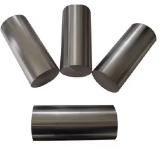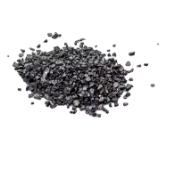**Turning Blobs into Beauty: Your Garage Guide to Crafting Metal Plates**
(How To Melt Metals Into Plates)
Melting metal isn’t just for factories or medieval blacksmiths. With some basic gear and a dash of caution, you can turn scrap metal into smooth, custom plates right at home. Let’s break it down.
Start by gathering your tools. You’ll need a heat source. A propane forge works well, but a simple charcoal furnace built from firebricks can do the job. Grab a crucible—a sturdy container made of graphite or clay to hold the metal. Don’t forget tongs for handling hot stuff, molds shaped like plates, and safety gear: thick gloves, goggles, and a fire extinguisher. Clear a workspace outdoors. Sparks fly, and metal smells like burnt pennies.
Pick your metal. Aluminum is beginner-friendly. It melts around 660°C (1220°F), which most DIY setups can hit. Old soda cans, car parts, or wiring work. Steel needs hotter temps (over 1500°C/2732°F) and is trickier. Stick with aluminum first.
Prep the metal. Clean it. Dirt or paint creates nasty fumes. Use sandpaper or a wire brush. Cut big pieces into smaller chunks. More surface area helps them melt faster. Fill your crucible about halfway—no overpacking.
Fire up the heat. Place the crucible in the forge or furnace. Crank the propane torch or pile charcoal around it. Let the metal heat slowly. Rushing creates cold spots. Watch the color change. Aluminum goes from shiny to dull gray, then starts glowing orange. Stir occasionally with a steel rod to mix it evenly.
Liquid metal is like lava. Handle with care. Once fully melted (no solid chunks), turn off the heat. Grab the crucible with tongs. Pour slowly into your mold. Steel molds are best, but sand molds work too. Tilt the crucible gently to control the flow. Fill the mold just below the rim.
Let it cool. Don’t touch it. Metal solidifies fast, but wait at least 10 minutes. Speed this up by spraying water around the mold (not directly on the metal!). Thermal shock can crack it. Pop the plate out once cool. Sand rough edges with coarse grit paper. Buff with a softer pad if you want shine.
Troubleshooting? Bubbles mean trapped gas—preheat the mold next time. Warped shape? Your mold wasn’t level. Brittle metal? Impurities—clean the scrap better. Practice makes less imperfect.
Safety reminders: Never use water on molten metal. Steam explosions are real. Keep kids and pets away. Work in a well-ventilated area—fumes are no joke. If something catches fire, don’t panic. Use the extinguisher, not water.
(How To Melt Metals Into Plates)
Why bother? Custom plates can become art, tool parts, or quirky coasters. It’s satisfying to turn junk into something solid. Plus, you’ll earn bragging rights. Next time someone admires your metal plate, shrug and say, “Yeah, I made that. In my garage.”
Inquiry us
if you want to want to know more, please feel free to contact us. (nanotrun@yahoo.com)


